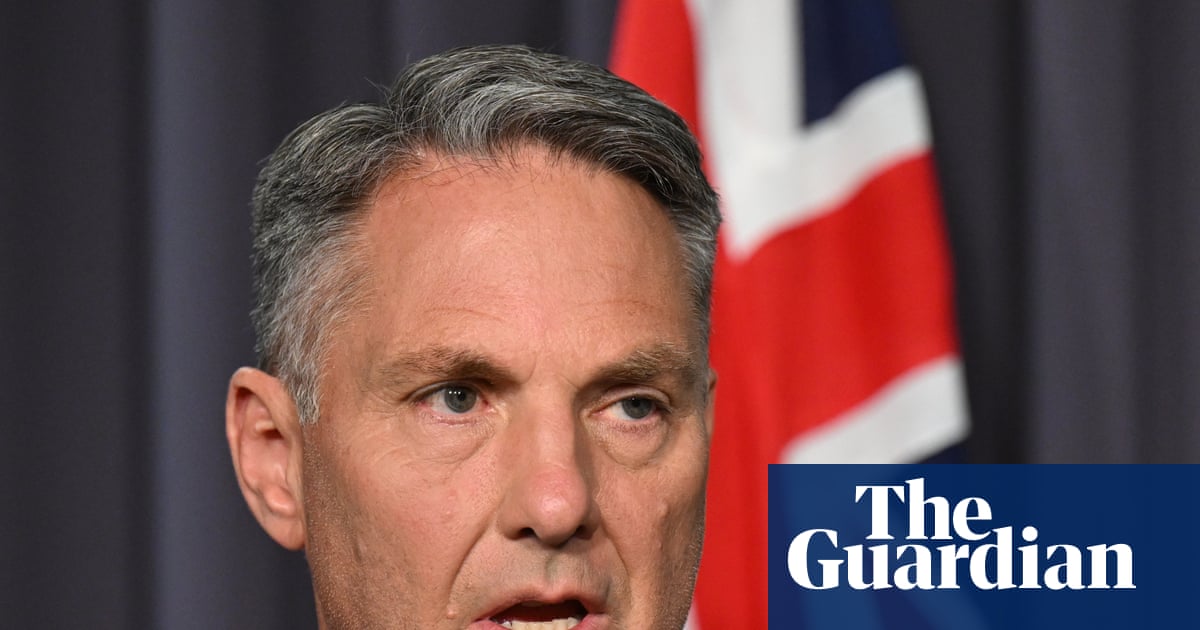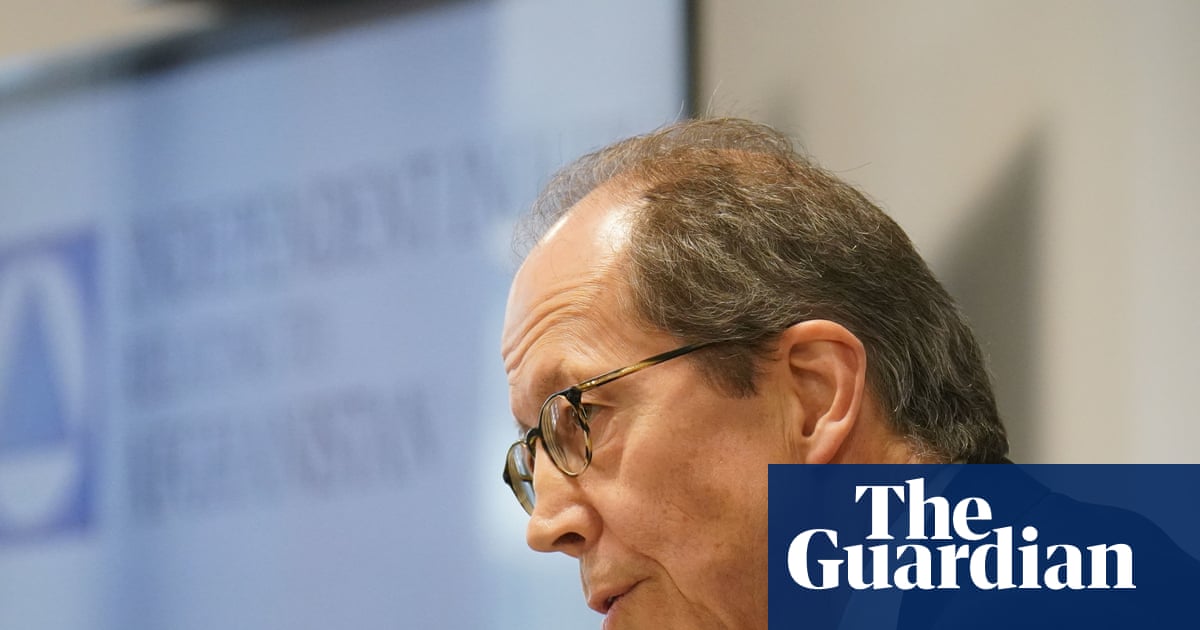Key events Show key events only Please turn on JavaScript to use this feature
The main economic event this week is the US Federal Reserve’s Jackson Hole symposium in Kansas from Thursday until Saturday, whose theme is: ‘The policy implications of labour market transition’.
Fed chair Jerome Powell is due to the speak on the economic outlook and central bank policy.
Andrew Hollenhorst, chief economist at Citi Research, said:
Chair Powell will likely signal that risks to the employment and inflation mandates are coming into balance, setting up the Fed to resume returning policy rate to neutral.
But Powell will stop short of explicitly signalling a September rate cut, awaiting the August jobs and inflation reports. This would be fairly neutral for markets already fully pricing in a September cut.
Markets see an 85% chance of a quarter-point rate cut at the Fed’s next meeting on 17 September, followed by another reduction by December.
“There’s a swell of optimism at the start of the week, amid hopes for an easing of geopolitical risk and a more clement global economic environment,” said Susannah Streeter, head of money and markets at Hargreaves Lansdown.
Indices in Asia have benefited from a big pulse of positivity, with the Nikkei hitting fresh record levels. As more certainty has returned to corporate Japan, given that a new tariff regime has been agreed, it’s helped boost stocks.
The weaker yen has also been a positive force, given that it increases the value of profits made abroad. Car makers Toyota and Honda, as well as Uniqlo owner Fast Retailing, are among the biggest beneficiaries amid expectations that consumers overseas will keep snapping up their products given the greater clarity over pricing.
The FTSE 100 looks set for a small dose of Monday motivation, helping to erase some of Friday’s losses as investors take a glass half-full approach to the global economic outlook.
Investors are also waiting for the upcoming Jackson Hole central banker meeting, for clues about the direction of interest rates in the United States, with expectations that recent data will pave the way for more cuts. Despite the fierce criticism he’s had to shoulder from president Trump, Fed chair Jerome Powell is not expected to set a firm path for rate reductions. He is likely to say he’ll stay driven by the latest inflation and jobs data available. Wall Street futures indicate a positive start for the S&P 500 and the tech-heavy Nasdaq, and there’s the potential for a push back up to record levels.
The future of Ukraine hangs heavy in the balance as Zelensky, flanked by European leaders, prepares to meet Trump. Putin’s high bar for a peace deal may scupper hopes for an end to the conflict, but with more details emerging about what land could be ceded or retained in Eastern Ukraine, there does seem be more substance to the talks. With less talk of tougher sanctions on Russia, oil prices dropped back as supply concerns faded, but amid the ongoing uncertainty Brent Crude has begun creeping higher and has headed back above $66 a barrel.
The fall in fuel costs since June will be welcomed by households, although it’ll take time to filter through to the pumps and may not fully show up in this week’s inflation figures in the UK.
Rightmove’s monthly survey showed that 34% of UK homes are now seeing a reduction in price during marketing. In data that goes back to 2012, this figure has only been higher at this time of year in 2023, and a two-speed market is becoming more evident.
The overall average time to find a buyer is 62 days, with the high number of homes for sale allowing buyers the time to make their choice and negotiate.
The Bank of England’s third interest rate cut this year, which came on 7 August, is likely to be another boost of confidence for the market over the remaining months of the year, the property website said.
Colleen Babcock, property expert at Rightmove, said:
Buyers have the upper hand in this high-supply market, so a tempting price is vital to agree a sale. The strategy is working, with the number of sales agreed in the full month of July being the best at this time of year since 2020. At that time, the market had recently re-opened after the first pandemic lockdown, and generous stamp duty reductions had just been announced.
However, the high number of price reductions we’re seeing is an indicator that some sellers are still coming to market with too high a price and then reducing it to become competitive.
Introduction: Stocks and oil rise before Ukraine meeting in Washington, UK house prices fall in August
Good morning, and welcome to our rolling coverage of business, the financial markets and the world economy.
Financial markets are focused on meetings at the Oval Office in Washington between Donald Trump and European leaders including Keir Starmer, Emmanuel Macron, Friedrich Merz, and Volodymyr Zelenskyy.
After meeting with Vladimir Putin in Alaska on Friday, Trump has put pressure on the Ukrainian president to agree to a quick settlement, saying he could end the war “almost immediately” if he wanted to. The US president also ruled out allowing Ukraine to join Nato or retake Russian-occupied Crimea as part of negotiations with Moscow.
Brent crude, the global benchmark for oil, has gained 0.5% to $66.16 a barrel while gold ahs risen by 0.4% to $3,348 an ounce.
Asian shares have got off to a good start to the week and European and US futures are also up, after Wall Street stocks traded near record highs last week on expectations of an interest rate cut at the Federal Reserve’s September meeting, perhaps even a half-point reduction under political pressure from the White House.
Attention now turns to Fed chair Jerome Powell’s appearance at the Jackson Hole symposium this week, starting on Thursday. Last week’s inflation data were mixed, with the consumer prices index showing limited price pressures while the producer prices index surprised higher.
In Europe, stock markets extended gains last week to their highest levels since March, before Trump’s tariff announcements.
The Nikkei rose by 0.77% and hit fresh record highs. The Shanghai exchange rose by nearly 0.7% towards a 10-year high while the Shenzhen market jumped 1.38% and India’s Nifty 50 rose by 1.2%, snapping a downtrend that began in late June amid tense US–India trade talks.
“Hope over fears,” says Ipek Ozkardeskaya, senior analyst at Swissquote Bank.
Both nations [China and India] would welcome any truce between Russia and the West, given their desire to maintain ties with both camps. European and US futures are also firmer.
The yen is softer, while gold demand remains strong — showing investors are cautious ahead of Trump’s meeting with Zelensky. Material progress could spark further oil weakness, a rally across equities, and softer gold demand. Disappointment would bring oil bulls back, pressure equities (except defense), and lift gold.
Turning to the UK housing market, savvy summer sellers, pricing realistically, have driven the best July for sales agreed since 2020, with prices falling again in August, according to the property website Rightmove.
Lower asking prices and good buyer choice are boosting sales activity, and the number of sales being agreed is now 8% ahead of this time last year. The number of homes for sales is 10% up on this time last year.
The average price of a property coming to the market for sale dropped by a seasonal 1.3% to £368,740 in August, in line with the 10-year average, following bigger-than-usual declines in June and July. With many people on holiday, prices usually fall in August.
The Agenda
-
10am BST: Eurozone trade for June

 3 months ago
57
3 months ago
57

















































